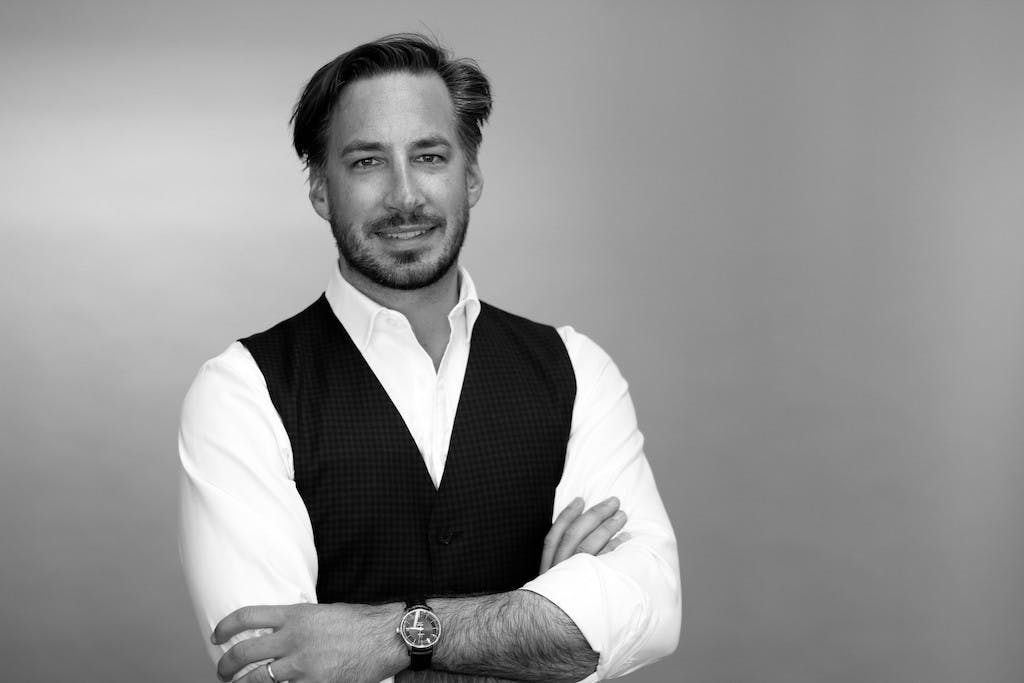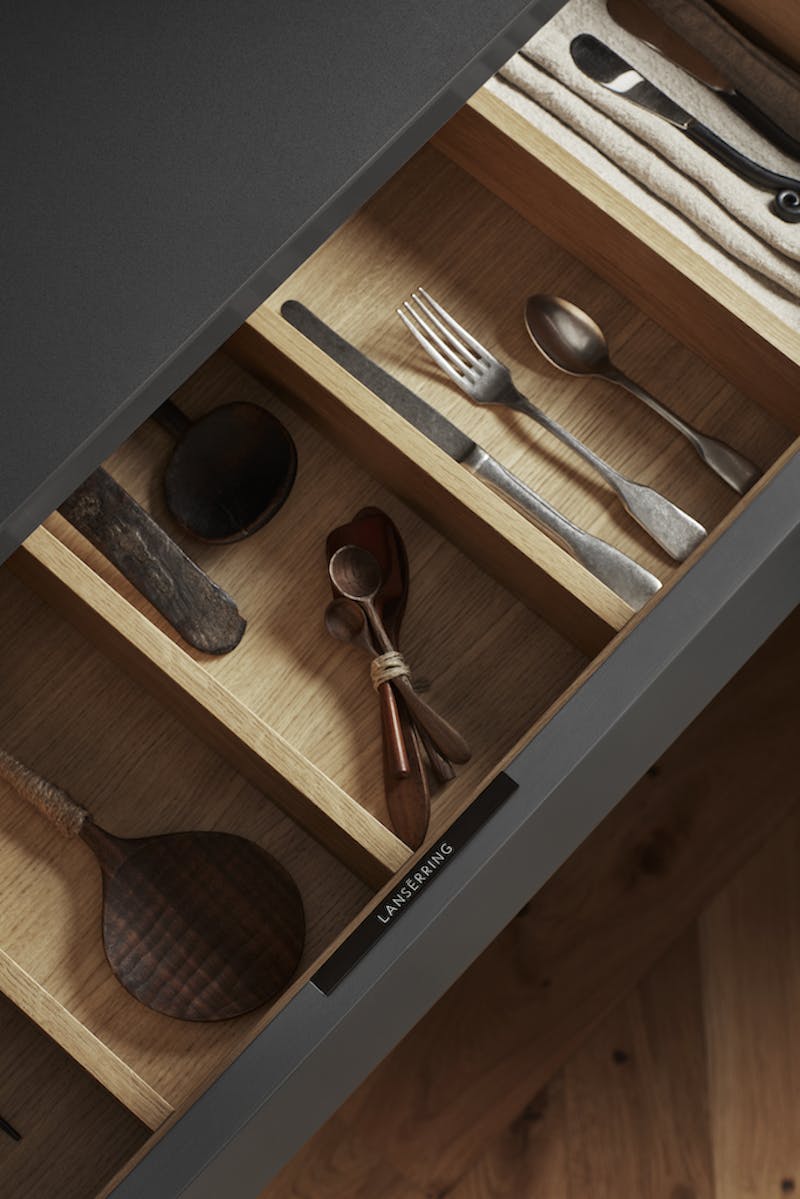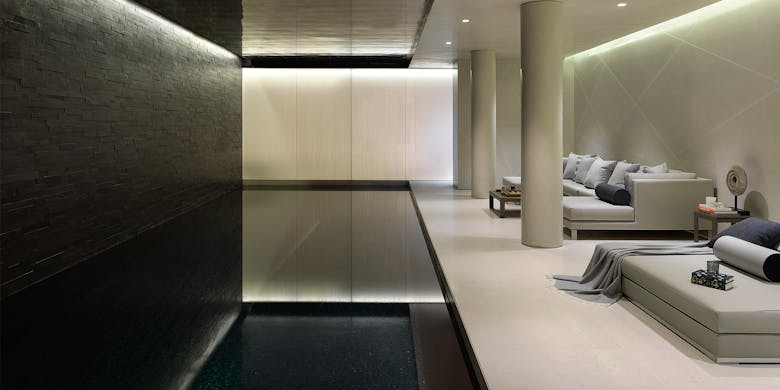Fourth-generation master craftsman and Interior-iD co-founder Bernd Radaschitz discusses working with some of biggest names in luxury development, and how his new brand is applying the principles of haute couture to kitchen and furniture design…

Your great grandfather, Johann Radaschitz, founded his joinery business in 1923; how much emphasis do today’s clients place on heritage and craftsmanship (over, say, brand names or price), and has this changed in recent years?
We find that craftsmanship, heritage and skill are more important for discerning clients than ever before – this is how true quality and luxury are defined.
Clients today take much more of an interest and have a much better understanding of materials and of design and manufacturing processes. Knowing that their product is made to the highest possible standards and with exceptional raw materials is priceless.
You founded Interior-iD with your brother Johann in 2006 and have gone on to supply some of the world’s top architects, interior designers and construction companies; can you run us through some of the names you’ve worked with to date – and schemes you’ve been involved with?
We worked with Candy & Candy on a number of apartments in One Hyde Park, which was a hugely ambitious and exciting project, which really established Interior-iD within the prime residential sector a decade ago.
We currently work closely with renowned design practices such as Martin Kemp Design, Studio Indigo, Katharine Pooley London, MWAI and Studio Ashby to name a few, as well as high profile developers including Finchatton, Luxlo (77 Mayfair), Amazon Properties (Park Crescent) and Clivedale (Mayfair Park Residences).

You now lead a team of 25 designers and project managers from your studio in Notting Hill, while Johann manages the 40-strong joinery workshop in Austria; how does the process work from commission to installation?
The three sister companies – Radaschitz, Interior-iD and Lanserring – work holistically together to provide a 360-degree, concept to completion service. The Radaschitz workshop in Austria provides exceptional craftsmanship for kitchens, joinery and fitted furniture; Interior-iD project-manages and delivers complex projects; whilst Lanserring provides bespoke designs for its clientele.
Our design aesthetic, experience and knowledge of manufacturing techniques and materials, as well as expert project management capabilities, elevates the design and delivery process for our clients. In order to thrive in the bespoke, luxury space, you have to exceed expectation in all three areas – Product, Management and Design.

How many projects does Interior-iD have on the go at any one time, and how involved are you personally on each one?
About 15-20 live projects at any one time, all at various stages – some are in the early technical design phase, some are in the manufacturing phase and some are towards the installation completion phase. I keep a close eye across all projects but I’m proud to say that we have been able to build a team of consummate experts. We have strived and managed to create a company culture in which every project manager ‘owns’ their own projects from start to finish. The collective support team ensures that all of our clients’ expectations are not only met but exceeded.
You launched the Lanserring brand in 2017, specialising in design-led kitchens and furniture; what prompted the decision and where would you like the brand to be in five years’ time?
Lanserring was born from our passion for constant innovation and delivering uncompromising excellence in craft and design. Through our work at Interior-iD, my brother and I saw an increasing demand for bespoke kitchens and identified a gap in the market for a premium kitchen brand which provides a truly bespoke concept to completion service; a brand that embraces the challenges of working with new, innovate styles and materials.
The combination of our heritage in craftsmanship, product delivery and design creativity gives us strong position in the marketplace, and over the coming years we want to continue our work with our growing client base. This includes private individuals, as well as architects, designers and fellow creative professionals who want to explore and develop their own design concepts and ideas. Lanserring also appeals to property developers looking to collaborate with a brand on their prime and super prime schemes, in order to maximise their offering to the client base.
Whilst our heritage lies in Austria, we are a London-based, British brand, and our ambition is to bring our aesthetic to a global audience.

How much influence do current design trends have on the Lanserring aesthetic (e.g. en vogue materials or colour palettes), and how do you ensure the designs will stand the test of time?
We avoid trends at Lanserring. We want to ensure that we are creating designs which have a strong sense of timeless innovation. Each kitchen is of course fully bespoke, but our overall aesthetic blends traditionalism with a contemporary twist. We like to reimagine authentic details from the past and place them in a current setting. Taking this approach, and always using the highest quality materials, ensures that the designs will last.
We also have to design with our clients’ lifestyles and needs at front of mind, rather than trends, which can so often change rapidly from season-to-season. Our clients are making an investment in a Lanserring kitchen, and they need to feel confident that the aesthetic won’t date.
You work with a variety of different materials, notably marble, glass, metalwork and wood; have new technologies changed the way designers use such traditional materials, and are there any other big developments we should be aware of in terms of manufacturing?
We combine high-end technology with traditional skills in order to meet the demanding requirements of speed and accuracy, as well as retaining creativity and craftsmanship. This process is brought to life at the Radaschitz workshop in Austria, where state-of-the-art equipment and facilities are used by craftsmen who are trained through an intensive four-year apprenticeship programme.
One of the biggest developments we have seen in the market is the importance of metalwork. Aside from the use of specialist finishes on timber, innovative metalwork has become essential in our work and is an artform in its own right. We have therefore established a dedicated in-house metal workshop. We are also seeing an increasing demand for marble to be used throughout kitchens – not just on central island worktops – due to new techniques available that makes this stone more user-friendly. Innovative coating processes mean that homeowners don’t have to worry about staining the marble with water or household liquids.

‘Bespoke’ is bandied around as a description for most things these days; as a professional craftsman, how do you personally define the term?
Lanserring approaches a new brief with a rigorous research and design process, akin to the development of an ‘haute couture’ creation. Each commission is an opportunity to create something authentic and new; a journey, tailored to reflect the tastes and lifestyle of our clients.
We don’t work with modular systems that limit clients’ creativity. Clients are able to embrace the vast choice of materials, textures and processes available, allowing our kitchens and products to be completely unique and absolutely personalised to our clients. This process is the same whether the customer is a private homeowner or a developer working on a multi-unit scheme.
What impact is Brexit having on your business, and how are you planning for the future?
Despite the uncertainty of Brexit, clients still need to move forward with their lives – they still need to move house, extend or redesign their existing home to suite their changing needs. Appetite still exists in the high net worth market and I’m pleased to say that our pipeline for 2019 looks very healthy. However, we are also expanding into other global markets, so we are not completely relying on London and the UK for the coming year. We have ambitious plans to take Lanserring to other global cities, such as NYC and Hong Kong across the next few years.

How hard is it to find talented designers and artisans at the current time, and do you see this changing post-Brexit?
With our close links to Austria and having a base in London, we are in a fortunate position to attract highly skilled talents from the continent, as well as from Britain. Whilst nothing is certain in the current political climate, we are hopeful that this will not change dramatically post-Brexit.
Which residential developments do you particularly admire, and why?
Judged not only for aesthetic reasons, but as an overall scheme, this must be One Hyde Park. The development remains untouched in its position in the global market as the pinnacle of prime residential schemes, and it is still the landmark for many designers and developers alike to aspire to when it comes to ‘the next Luxury development’.

Are there any particularly unusual places you look for inspiration?
Historically, I would have usually said that I source inspiration from some amazing destinations I have travelled to, which is still the case, but in today’s digital age I also find a lot of inspiration on digital media. I follow and engage with many talented artisans and craftspeople who inspire me, from the world of art, music, food and fashion. Social Media in general has become such an important tool and we very much embrace it at Lanserring, with our imagery always at the front of our minds.
Besides digital channels, I also get a lot of inspiration from the different people I meet from around the world and from many different cultures.
Interior-iD has a reputation for delivering complex projects involving hard-to-source finishes; what’s your best advice for making sure a luxury scheme gets delivered successfully on schedule – and on budget?
The key to success is finding the right set of skilled people who fit the culture of the wider development team and who share your vision.
We are hugely fortunate that Interior-iD encompasses some of the most skilled and experienced project managers in the industry. All our project managers have a strong background in cabinet making – they go through a 4-year apprenticeship programme, followed by another 2 years of technical college before they graduate as master craftsman. They are then trained with management skills to become a project- or design manager, focusing on solutions, deadlines and budgets.
I am so proud of our team of craftsman, designers and managers, who take on challenging yet exceptional projects, with determination, enthusiasm and skill.

lanserring.com/interior-id.com


